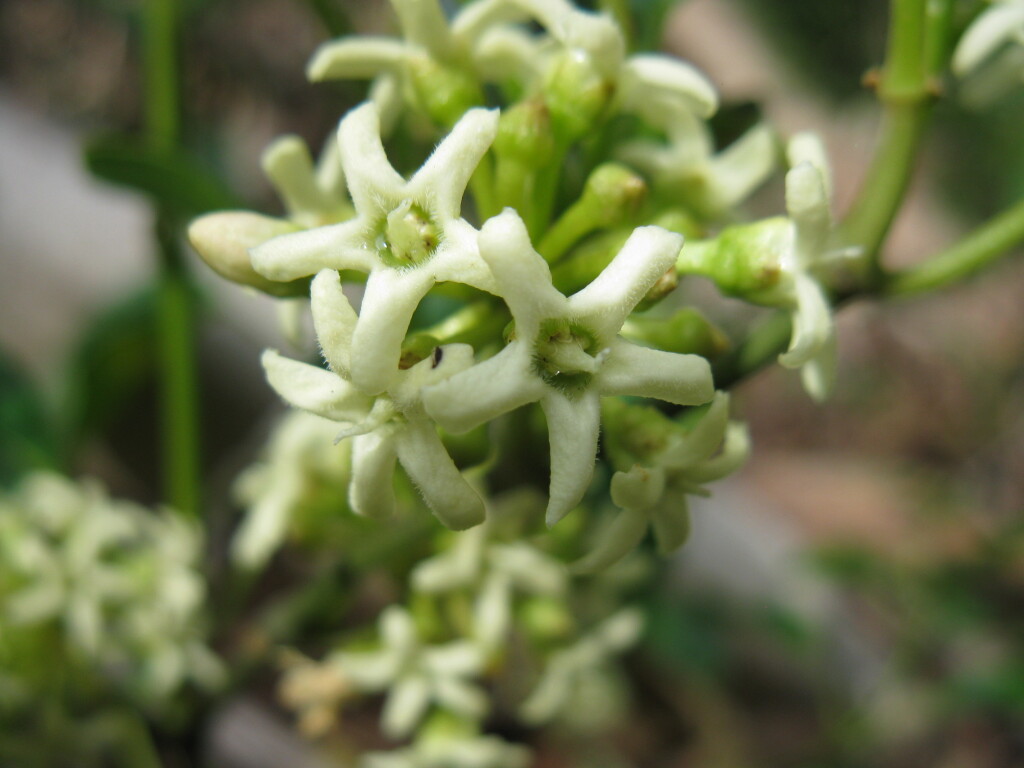Leichhardtia
R.Br.Climbers with twining stems (in Victoria), or erect shrubs; sap milky or yellowish, rarely watery (not in Victoria). Leaves opposite, with minute glands at base of midvein above, petiolate. Inflorescences of simple or compound umbels beside leaf axils. Flowers mostly white or yellow; sepals usually with minute glands inside at base; corolla rotate to urceolate, lobes spreading, contorted in bud; corona of 5 segments adnate to staminal column at base and opposite the anthers, sometimes with free basal auricles or winged, upper part erect and free, shorter than or slightly exceeding anthers; pollinia 2 per anther, erect; style head obtuse, conical or beaked. Follicles ovoid or fusiform, rarely orbicular, turgid; seeds many, with a silky coma.
67 species in Malesia (including New Guinea), Australia and Melanesia (Fiji, New Caledonia, Solomon Islands; 27 in Australia.
The Victorian species were formerly included in the largely tropical/warm-temperate genus Marsdenia, but following phylogenetic analysis by Leide-Schumann et al. (2022), and taxonomic reassignment by Forster (2021), Marsdenia s.l. has been broken up into several genera and Marsdenia s.s. now restricted to 10 Asian species.
Jeanes, J.A. (1999). Asclepiadaceae. In: Walsh, N.G.; Entwisle, T.J., Flora of Victoria Vol. 4, Cornaceae to Asteraceae, pp. 325–332. Inkata Press, Melbourne.
 Spinning
SpinningForster, P.I. (2021). Gymnema R.Br. and Leichhardtia R.Br. (Apocynaceae), reinstated genera for taxa previously included in Marsdenia R.Br.: a conspectus for Australia, New Guinea and the Solomon Islands. Austrobaileya 11: 1–18.
Leide-Schumann, S.; Reuss, S.J.; Meve, U.; Gâteblé, G.; Livshultz, T.; Forster, P.I.; Wanntorp, L.; Rodda, M. (2022). Phylogeny of Marsdenieae (Apocynaceae, Asclepiadoideae) based on chloroplast and nuclear loci, with a conspectus of the genera. Taxon (online version https://doi.org/10.1002/tax.12713).

